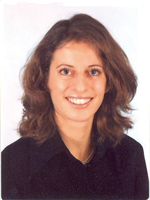 by Ariane Sutor
by Ariane Sutor
The European Union has adopted ambitious energy and climate change objectives to be achieved by the year 2020: greenhouse gas emissions should be reduced by 20% while the share of renewable energy is to be increased and energy efficiency to be improved by this amount. Furthermore, the EU has made a long term commitment to cut emissions by at least 80% by 2050.
So far the current strategies are unlikely to achieve all 2020 targets; whilst the goal to increase the share of renewables seems to be attainable, we are likely to fail on the improvement of efficiency. Also, the strategies in place seem inadequate to meet the longer term challenges. Use of renewable energy is still limited because the development of efficient energy transport is lagging. The internal energy market is still fragmented and needs improvement regarding transparency, accessibility and choice. Fragmentation of national regulation limits companies to act on multi-national markets and sets barriers to fair competition. The EU must take urgent action to select the right tools to make the energy change happen and to move towards a sustainable energy future.
The current situation exhibits a number of major challenges. Large-scale renewable energy generation is currently largely based on wind, and plants may be installed far from existing power infrastructure, thus connection to the grid can present a challenge. Owing to the inherent variability and weather dependence of energy production and the limited capacity for energy storage, balancing supply and demand becomes also far more difficult.
The deployment of distributed energy resources can mitigate the uncertainties connected to large plants and at the same time exploit the potential of dispersed resources, although the integration of distributed energy resources is extremely challenging both from a market and a technical point of view. Decentralization supports scalability and robustness and facilitates access to the energy market for prosumers, thereby supporting changes to consumer behaviour and social acceptance. It is imperative that consumers understand and trust the process and receive clear benefits, eg energy savings, more transparent billing and a business case for electric vehicles, heat pumps and smart appliances. Demand response is also a central theme where consumers’ load reductions are aggregated to offer flexible services to other stakeholders in the electricity system.
One key to the integration of intermittent and dispersed renewable energy and to increased energy efficiency is the introduction of Smart Grids. In addition to building new lines and substations, it is essential to make the electricity system smarter through the introduction of Information and Communication Technologies (ICT). Smart Grids can be described as advanced electricity networks enabling two-way exchange of power and information between suppliers and consumers based on the introduction of intelligent communication, monitoring and management systems. An open and secure ICT infrastructure is at the core of the implementation of the Smart Grid. Interoperability, data privacy and security thereby play a crucial role. Currently a convergence towards proven communication standards and industry best practices is observed, eg Internet Protocol communication.
For smart grids to exhibit their full potential the realization of physical infrastructures is needed as well as new business models and regulations. There is a critical need to adopt a European energy policy to overcome the fragmentation related to national and regional policies. Management bodies at EU level include the Directorate Generals for Energy and for Research (DG ENER, RTD) and the Joint Research Centre JRC.A recent update of the European Strategic Energy Technology Plan (SET Plan) describes the strategy to accelerate the development and deployment of cost-effective low carbon technologies. Other related bodies include: the Smart Grids Task Force SGTF on European regulation and standardization, the Smart Grids European Technology Platform ETP providing the European strategic research agendas SRA 2020 and 2035 as well as industry driven consortia like ENTSO-E and EDSO of European transmission and distribution system operators respectively. The European Institute of Innovation and Technology (EIT) is an institution of the EU with the mission to increase European sustainable growth and competitiveness by reinforcing innovation capacity. Within EIT ICT Labs the action line Smart Energy Systems drives European innovation for smart energy systems regarding user involvement, business models and ICT-enabled infrastructures and mobilizes a strong network of industrial partners, research institutes and technical universities.
A large number of European-level research, demonstration and deployment projects focusing on the development of smart grids are currently underway. Most projects are supported by FP6 and FP7 but many, including the Portuguese National Strategic Reference Framework (QREN), the Spanish Centre for Industrial Technology Development (CDTI) and the German funding program “E-Energy”, also benefit from substantial national co-funding. A major part of future funding will be included in the upcoming Horizon 2020. The European Commission funds a whole series of different issues concerning the implementation of smart grid technologies. Large investments are foreseen to extend existing grids to cope with the intermittent nature of renewable sources, eg new lines, additional capacities but also balancing area extension, re-designed market mechanisms and storage integration. Research projects are addressing the problem of distributed energy resources, with a focus on online coordination of distributed generators and storage devices such as electric vehicles to enhance grid stability and optimization of energy resources.
Smart, sustainable and inclusive growth for Europe includes a shift in our energy policy leading to increasing renewable resources and improved energy efficiency. Smart Grids are the key enabler to achieve the policy objectives and to maintain a leading European technological and competitive position. In addition to new technologies, real pan-European regulations and markets are required. To this end, it will be paramount that partners from industry, research institutes and universities continue to join forces.
Ariane Sutor
Siemens AG
EIT ICT Labs “Smart Energy Systems” Action Line Leader











